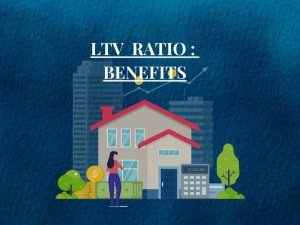November 10, 2024
What is LTV Ratio? Benefits and Key Facts Explained

What is LTV Ratio? Benefits and Key Facts Explained
When applying for a home loan, one critical concept that borrowers encounter is the Loan-to-Value Ratio. Understanding the ratio is crucial, as it plays a significant role in determining loan eligibility and financial planning. Let’s explore its meaning, benefits, and key facts to help you make informed decisions.
What is LTV Ratio?
The Loan-to-Value (LTV) Ratio is a financial metric used by lenders to assess the risk involved in lending money for a property purchase. It is calculated as a percentage by dividing the loan amount by the appraised value or purchase price of the property (whichever is lower).
Read More : NBFC Vs Bank ? Choose the best for your Home loan.

Formula:
LTV=Loan Amount Property Value×100
For example, if the property value is ₹50,00,000 and the loan amount is ₹40,00,000, the LTV ratio is 80%.
Key Fact:
- Lenders prefer lower LTV ratios, as they indicate less risk. A lower ratio means the borrower has made a higher down payment.
Benefits of Understanding LTV Ratio
Grasping the concept of LTV ratio offers multiple advantages, both for lenders and borrowers.
1. Better Financial Planning
Knowing the ratio helps borrowers determine how much down payment they need to arrange. A higher down payment reduces the ratio, leading to better loan terms.
2. Improved Loan Terms
Borrowers with a lower LTV ratio can enjoy benefits like lower interest rates, reduced monthly payments, and quicker loan approvals.
3. Reduced Risk of Rejection
Lenders view a lower ratio as a sign of financial stability, reducing the chances of loan rejection.
4. Avoiding Mortgage Insurance
Loans with high LTV ratios may require mortgage insurance, adding extra costs. Maintaining a lower ratio helps avoid this additional expense.
Key Facts About LTV Ratio
Understanding some key facts about LTV can further enhance your knowledge of home loans.
1. LTV Limits Vary by Loan Type
Different loans have varying ratio limits. For instance, home loans in India typically allow an LTV of up to 80% to 90%, depending on the lender and loan amount.
2. It Affects Loan Costs
Higher LTV ratios often come with higher interest rates, as lenders compensate for the increased risk.
3. Property Value Matters
The property’s appraised value significantly influences the LTV ratio. Borrowers should always seek an accurate property valuation.
4. Regulatory Guidelines
In India, the Reserve Bank of India (RBI) regulates LTV ratios for housing finance, ensuring financial discipline and stability in the housing market.
Explore More : Economics of Eco-Friendly Home?

How to Reduce Your LTV Ratio?
Reducing your ratio can make your home loan application stronger. Here are some practical tips:
1. Increase Your Down Payment
Saving more for your down payment lowers the loan amount, reducing the ratio.
2. Choose Properties Within Budget
Opt for properties that align with your financial capacity to avoid high LTV ratios.
3. Negotiate Loan Terms
Work with lenders to explore options for reducing the LTV ratio through structured repayment plans.
Conclusion
The Loan-to-Value ratio is a crucial metric that influences your home loan journey. By understanding its importance, benefits, and key facts, you can plan your finances wisely and secure favorable loan terms. Whether you’re purchasing your first home or refinancing an existing property, being informed about LTV helps you make confident decisions.
Vridhi Home Finance offers a variety of home loan options tailored to meet your needs, ensuring your dream home becomes a reality. Contact us today to learn more!



